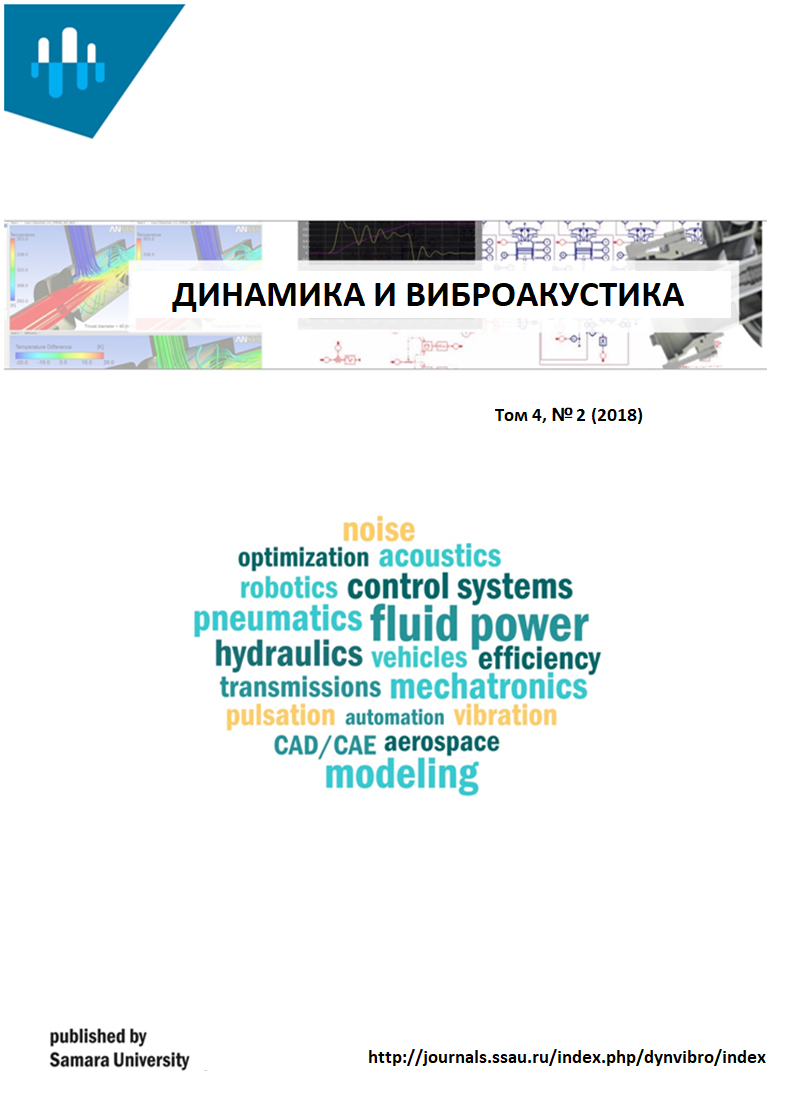Experimental investigation of the thermoacoustic traveling-wave engine
- Authors: Zinovyev E.A.1, Vorotnikov G.V.1, Kharitonov A.A.1, Lysenkov V.V.1
-
Affiliations:
- Joint Stock Company Space Rocket Centre Progress
- Issue: Vol 4, No 2 (2018)
- Pages: 18-26
- Section: Articles
- URL: https://dynvibro.ru/dynvibro/article/view/6510
- DOI: https://doi.org/10.18287/2409-4579-2018-4-2-18-26
- ID: 6510
Cite item
Full Text
Abstract
Thermoacoustic engines are devices with external heat input, in which thermal energy is converted into energy of acoustic oscillations. Their main advantages include high energy conversion efficiency (up to 35%), minimal number of moving parts, high reliability, absence of contact seals and operation from a variety of heat sources (hydrocarbon fuels, thermal emissions, nuclear sources, solar radiation, etc.). The main goal of this work is to develop, manufacture and carry out the experimental investigations of the thermoacoustic traveling wave engine with a maximum heat input from the electric heating element up to 1000 W. The thermoacoustic engine includes an inertance tube, three heat exchangers, a regenerator, a thermal buffer tube and an acoustic resonator. Helium acts as the working fluid in the engine at an average pressure of 1.0 to 3.0 MPa. The frequency of acoustic oscillations on the steady-state operating mode of the engine is 96-98 Hz. The regenerator is made in the form of a package of metal screens and is the main element of the engine, in which thermoacoustic energy conversion is carried out. In experimental research the following tasks were solved: - determination of the optimal conditions for the excitation of acoustic oscillations in the internal contour of the thermoacoustic engine; - determination of the minimum onset temperature at which acoustic oscillation are excited; - determination of the dependences of the onset temperature, the frequency and the amplitude of acoustic oscillations from the input thermal power; - determination of the efficiency of the rmoacoustic energy conversion; In experimental studies, an optimal mean helium pressure is determined, which ensures the minimum heat exchanger temperature 436 К (163 °C) required to start the engine. The maximum value of the acoustic power generated by the regenerator was 90 W. At the same time, the efficiency of conversion of thermal energy into acoustic energy reached 22.5% at a heat exchanger-heater temperature of 317 °C. Also during the tests, it was possible to establish the dependences of the onset temperature, the frequency of acoustic oscillations and the amplitude of the acoustic pressure on the supplied thermal power. This type of engine described in this paper can be used in many practical applications.
About the authors
Evgeniy Aleksandrovich Zinovyev
Joint Stock Company Space Rocket Centre Progress
Email: eazinovyev@gmail.com
Engineer
Russian FederationGennadiy Viktorovich Vorotnikov
Joint Stock Company Space Rocket Centre Progress
Author for correspondence.
Email: vorotnikov.g.v@mail.ru
Engineer
Russian FederationAleksandr Aleksandrovich Kharitonov
Joint Stock Company Space Rocket Centre Progress
Email: hritonov.aleksandr2011@yandex.ru
Hard of a department
Russian FederationVladimir Vasilievich Lysenkov
Joint Stock Company Space Rocket Centre Progress
Email: lysvlad10@yandex.ru
Engineer
Russian FederationReferences
- Strutt, J. W. (Baron Rayleigh) (1926), “The Theory of Sound”, Macmillan and Co. Limited, vol. 2, 475 p.
- Rott, N. (1969), “Damped and thermally driven acoustic oscillations in wide and narrow tubes”, Journal of Applied Mathematics and Physics, vol. 20, pp. 230-243.
- Rott, N. (1973), “Thermally driven acoustic oscillations. Part II: Stability limit for helium”, Journal of Applied Mathematics and Physics, vol. 24, pp. 54-72.
- Rott, N. (1974), “The influence of heat conduction on acoustic streaming”, Journal of Applied Mathematics and Physics, vol. 25, pp. 417-421.
- Rott, N. (1975), “Thermally driven acoustic oscillations. Part III: Second-order heat flux”, Journal of Applied Mathematics and Physics, vol. 26, pp. 43-49.
- Rott, N. (1976), “Thermally driven acoustic oscillations. Part IV: Tubes with variable cross-section”, Journal of Applied Mathematics and Physics, vol. 27, pp. 197-224.
- Zouzoulas, G. (1976), “Thermally driven acoustic oscillations. Part V: Gas-liquid oscillations”, Journal of Applied Mathematics and Physics, vol. 27, pp. 325-334.
- Swift, G. W. (2017), Thermoacoustics: A unifying perspective for some engines and refrigerators, Acoustical Society of America, New York, 326 p.
Supplementary files







